Sala10: Lúa Coderch
virtual exhibition
Shelter
The three letters brought together in this video form part of the series Shelter, one of the most recent audiovisual projects by Lúa Coderch. In each one, the artist creates a provisional shelter with simple materials, almost all of them found in the surrounding area. These fragile structures, which are resistant enough for one night outdoors, serve as a metaphor for everything that anchors us in life: love, the trust of our friends, family, lived experiences, memories and affection, all the things that allow us to hold on to what’s really important and reorient ourselves in the midst of uncertainty.
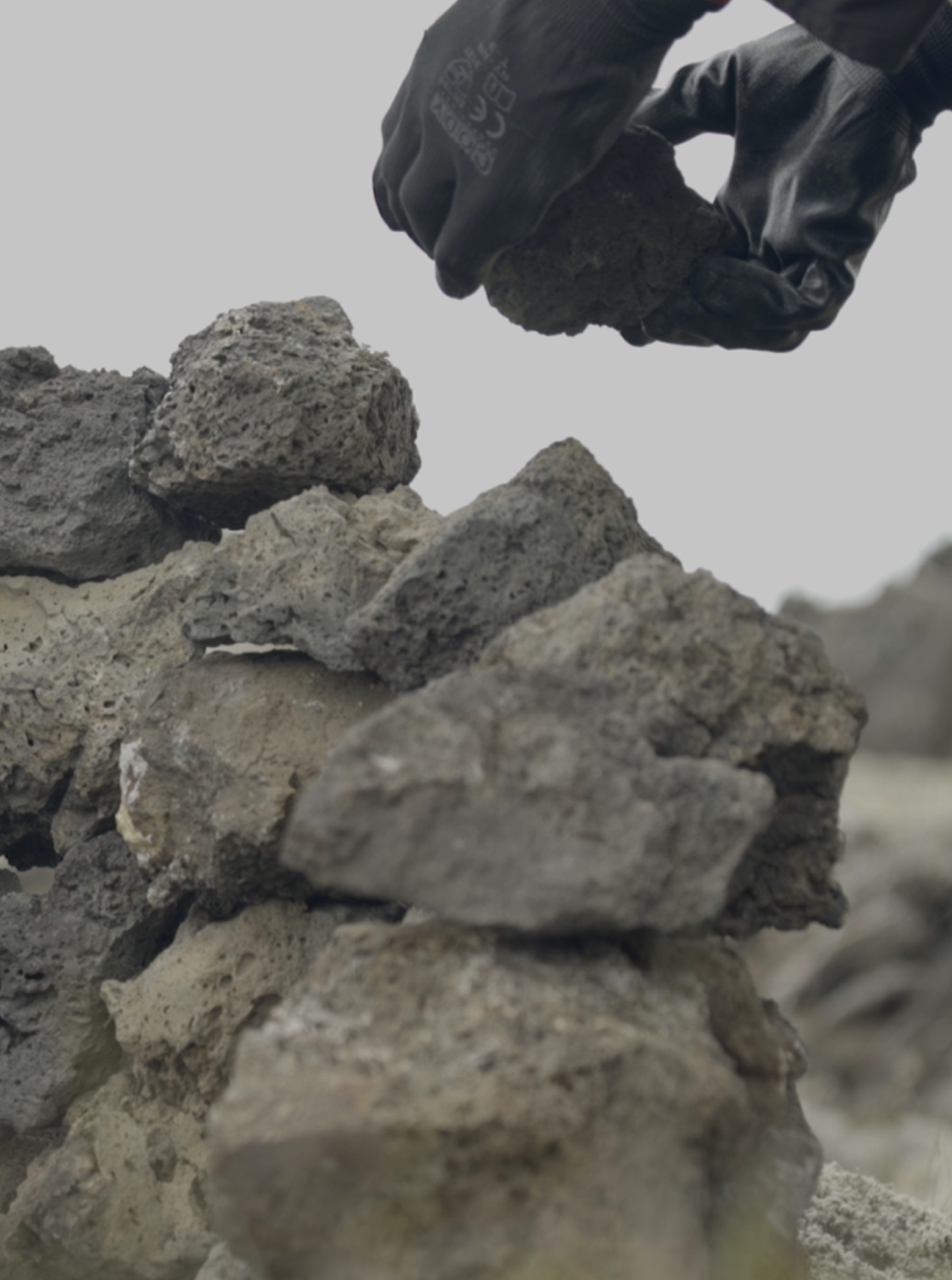
Care and Refuge
Branches, leaves, stones. Sometimes, tape for binding; at others, fabric. For three years, Lúa Coderch has been building shelters in many environments, sometimes before an immense glacier, sometimes on a tree farm. Using materials that can fit in a backpack or that were found onsite, the artist spent a day building these structures as markers in varied landscapes around the world. These ephemeral constructions serve as the basis for an imaginary correspondence. In an intimate voiceover, Coderch mixes together stories and personal memories as we explore the process of building these shelters. Coderch uses these letters to relate part of the creation of these structures and as a metaphor for human fragility and precarity.
Shelter speaks to how we inhabit the world. Its jumping-off point is the construction of a place and the process through which a space becomes a landscape for being or living. These shelters allude to the evolution of the concepts of building and dwelling. As Martin Heidegger has argued, “dwelling would in any case be the end that presides over all building […] For building is not merely a means and a way toward dwelling—to build is in itself already to dwell.”[1] That is, the action of building implies that of dwelling, as raising and fixing a structure is also a way of finding our place in the world.
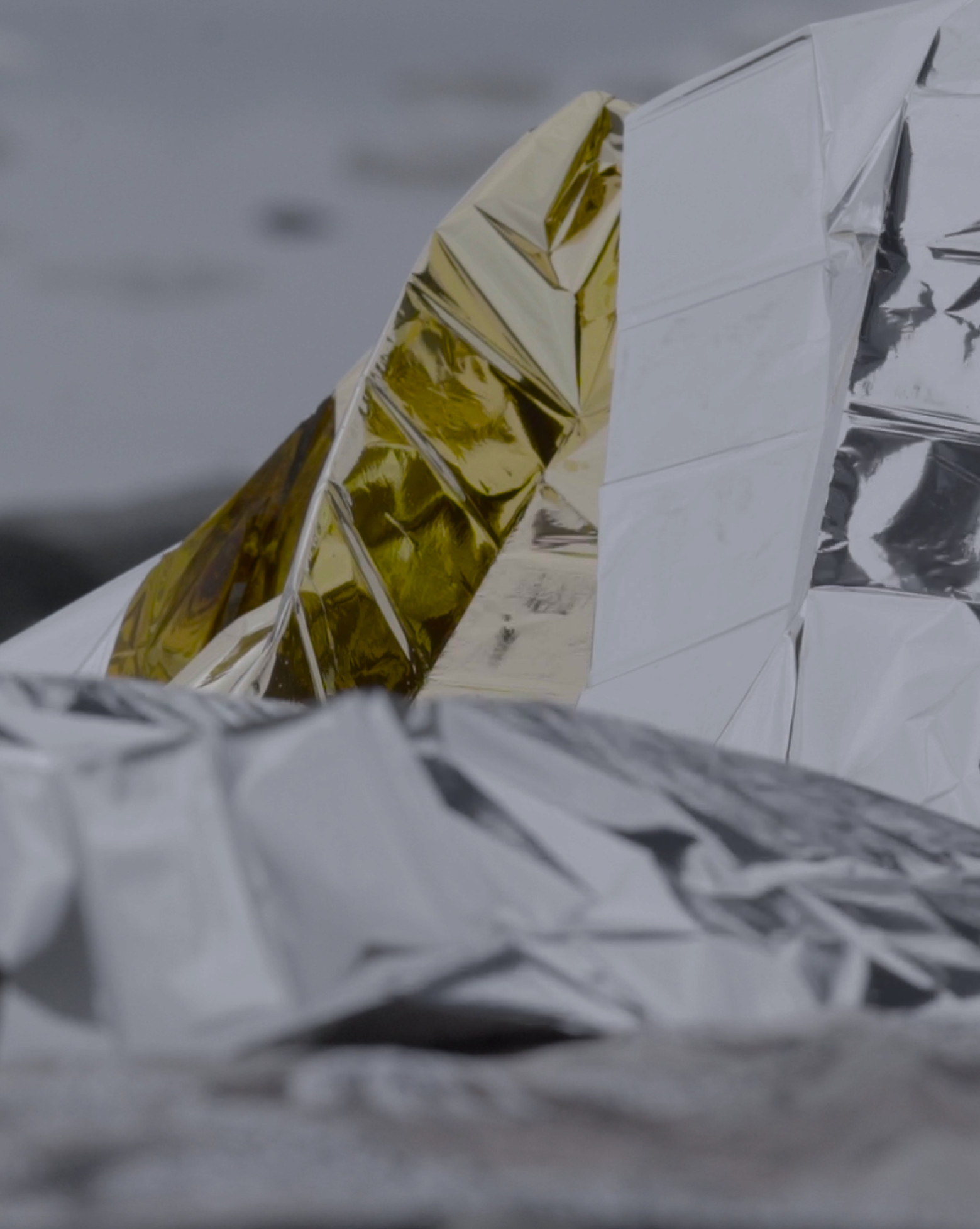
Coderch’s shelters are ambiguously habitable: they never manage to be fully useful, they serve neither as accommodations nor as protection from the elements. When building a shelter, the artist creates a space that previously did not exist and opens up a space from which to delimit boundaries. These structures thus function as gestures that allow us to reflect on representation and belonging at a site, analyzing the process of identifying with this space. Its possible habitability lies in the use of marks or signs of this “being.”
In this piece, the immensity of nature contrasts with the constructive actions of human smallness. The landscape embraces the artist’s persistent activity and constant nomadism. Nature is sometimes hostile, at others conciliatory. And in this relationship with nature, Coderch’s subtle invasion makes clear a veiled will to possess nature that is characteristic of the modern age, questioning the limits of the domestication of our environment.
In this piece, shelters are refuge and protection: a den or nest, a respite from the elements. Above all, these places become an anchor for cultivating necessary care. Even though there is a will to constantly build, the precarity of these structures is clear. If the artist emphasizes that fragility, it is to establish a parallel with our own vulnerability as people. Narratives emerge, giving form to affects and indicating how our subjectivity is rooted in our most primary connections.
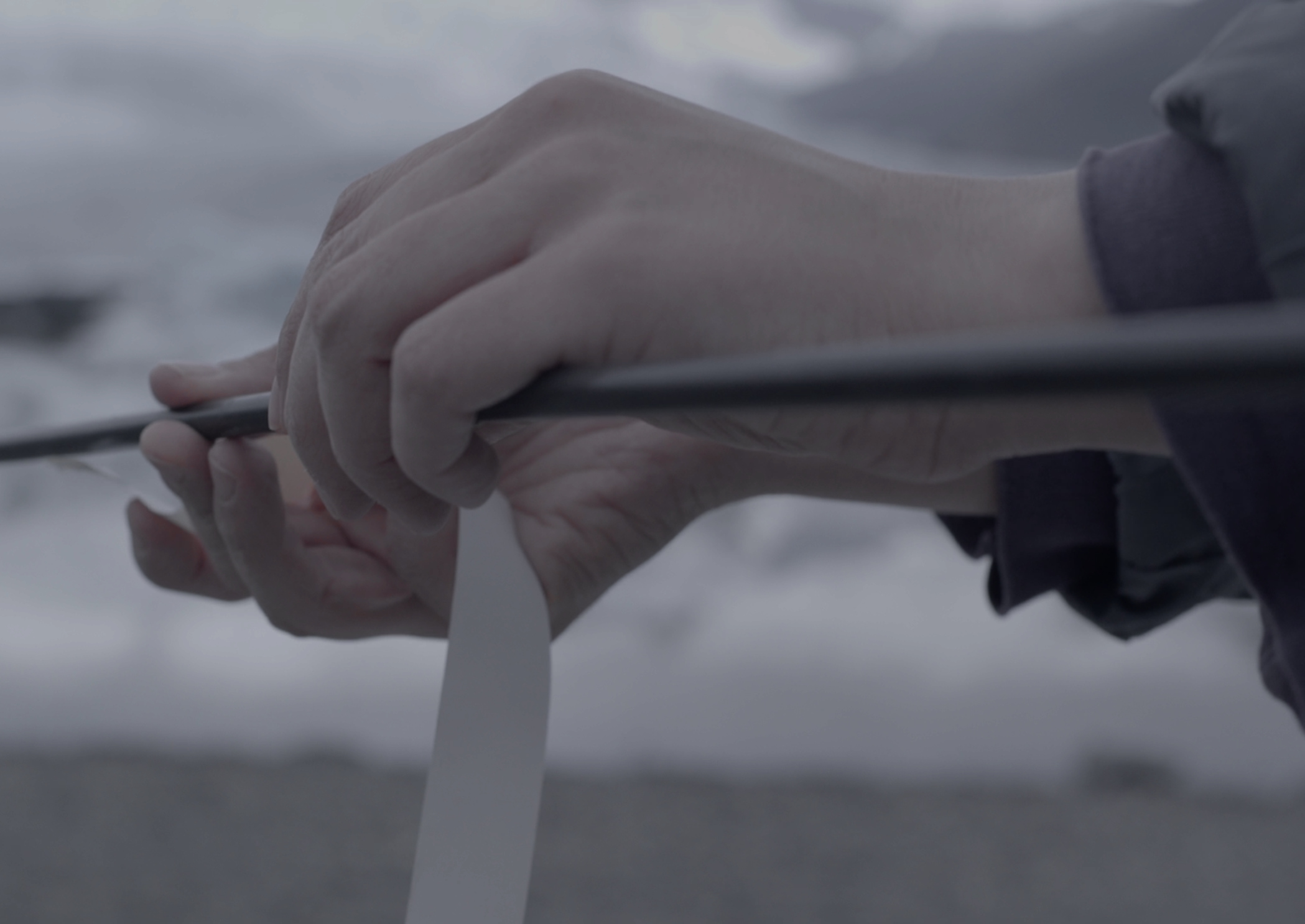
Shelters become emotions, memories and stories that weave together a narration that does not limit itself to the structure, reflecting the construction of one’s self as well. Just like Virginia Woolf’s room of one’s own, the shelter is a construction of our anchoring upon which we project our desires and reclaim our way of being. It is a line of flight in a confusing world and, at the same time, a space for withdrawal from bewilderment.
Virginia Roy
[1] Martin Heidegger, Conferencias y artículos, Barcelona, Ediciones del Serbal, 1994, p. 128.
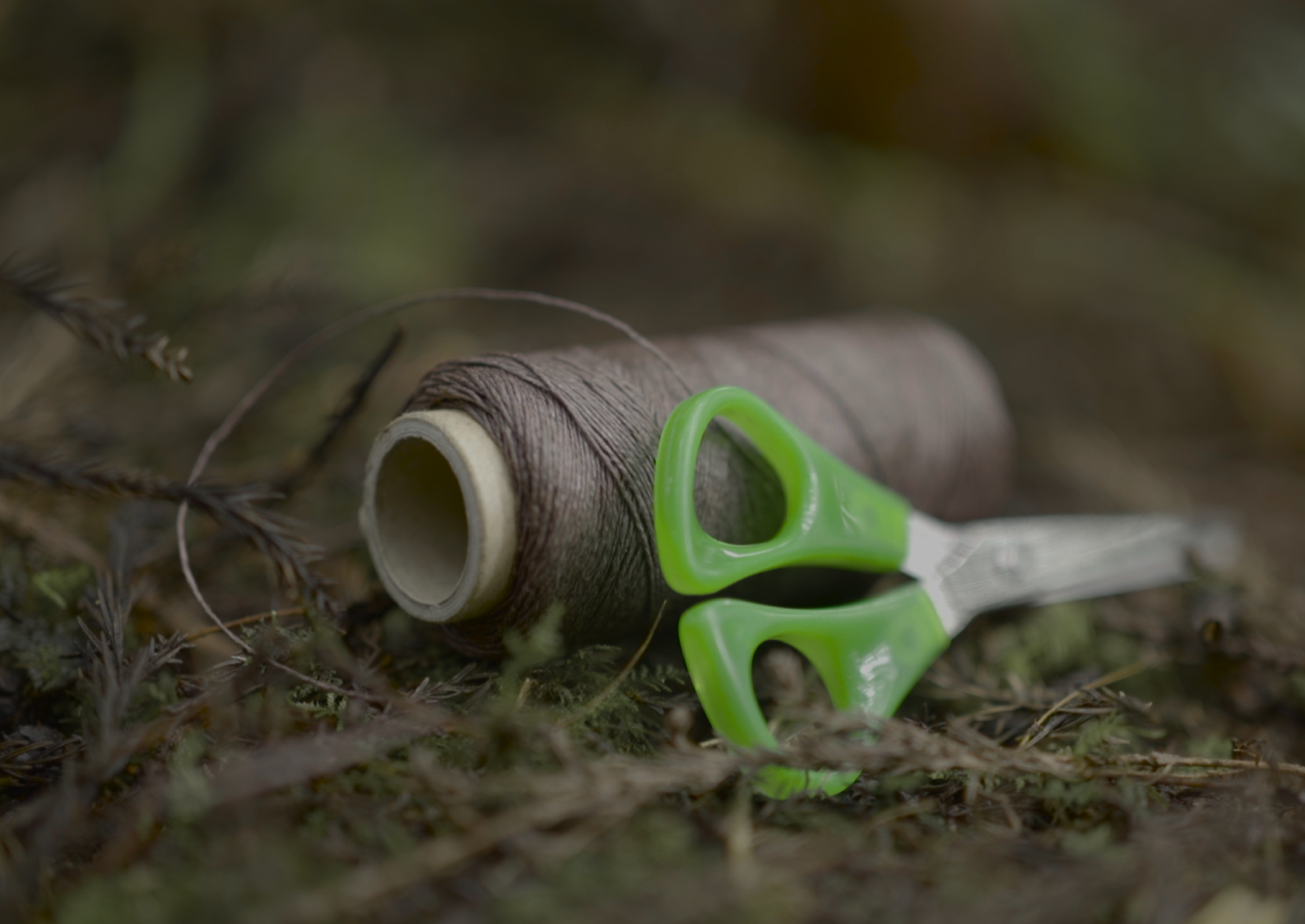
Correspondence between Lúa Coderch and Virginia Roy
From: Virginia Roy
To: Lúa Coderch
Date: Oct. 18, 2020, 23:49
Re: Place and materials
Dear Lúa:
I’ve received your last email. Thank you for sharing some of the shelters you’ve made during this time. [...]
COMPLETE CONVERSATION HERE
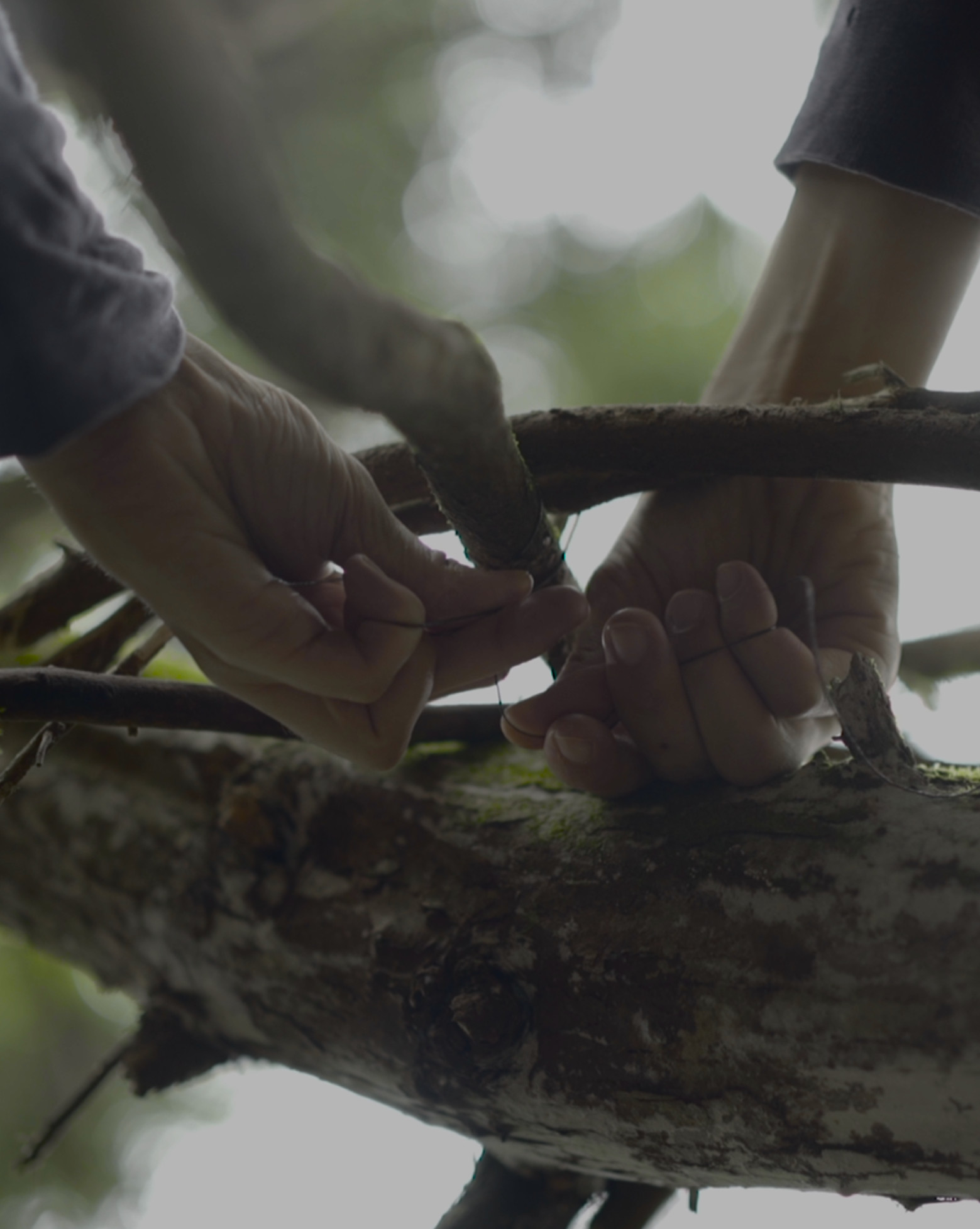
Lúa Coderch, from her series Shelter, 2015-2018 The Human Chair; They Look at Me, and They Think that I Know Too; Entering the Work
Video, 19’43”
Piece completed with support from the Ayuda Fundación BBVA a la Creación en Videoarte
2015
Courtesy of the Àngels Barcelona gallery
Lúa Coderch
(Maynas, Peru, 1982; lives and works in Barcelona)
Lúa Coderch combines narrative and objectual practices in videos, performances and installations that serve as research devices. Her work has been exhibited at CCCB (Barcelona, 2019), the 58th Venice Biennale (Catalan Pavilion, 2019), the Cuenca Biennale (Cuenca, 2019), CentroCentro (Madrid, 2018), Fundación BBVA (Madrid, 2018), the Art Institute (Vienna, 2017), MUSAC (León, 2017), ARTIUM, (Álava, 2017), the Laznia Centre for Contemporary Art (Gdańsk, 2017), KGLU (Slovenj Gradec, 2016), MSUV (Novi Sad, 2016), MACBA (Barcelona, 2016), Fundació Joan Miró (Barcelona, 2014) and SMART (Amsterdam, 2012).


